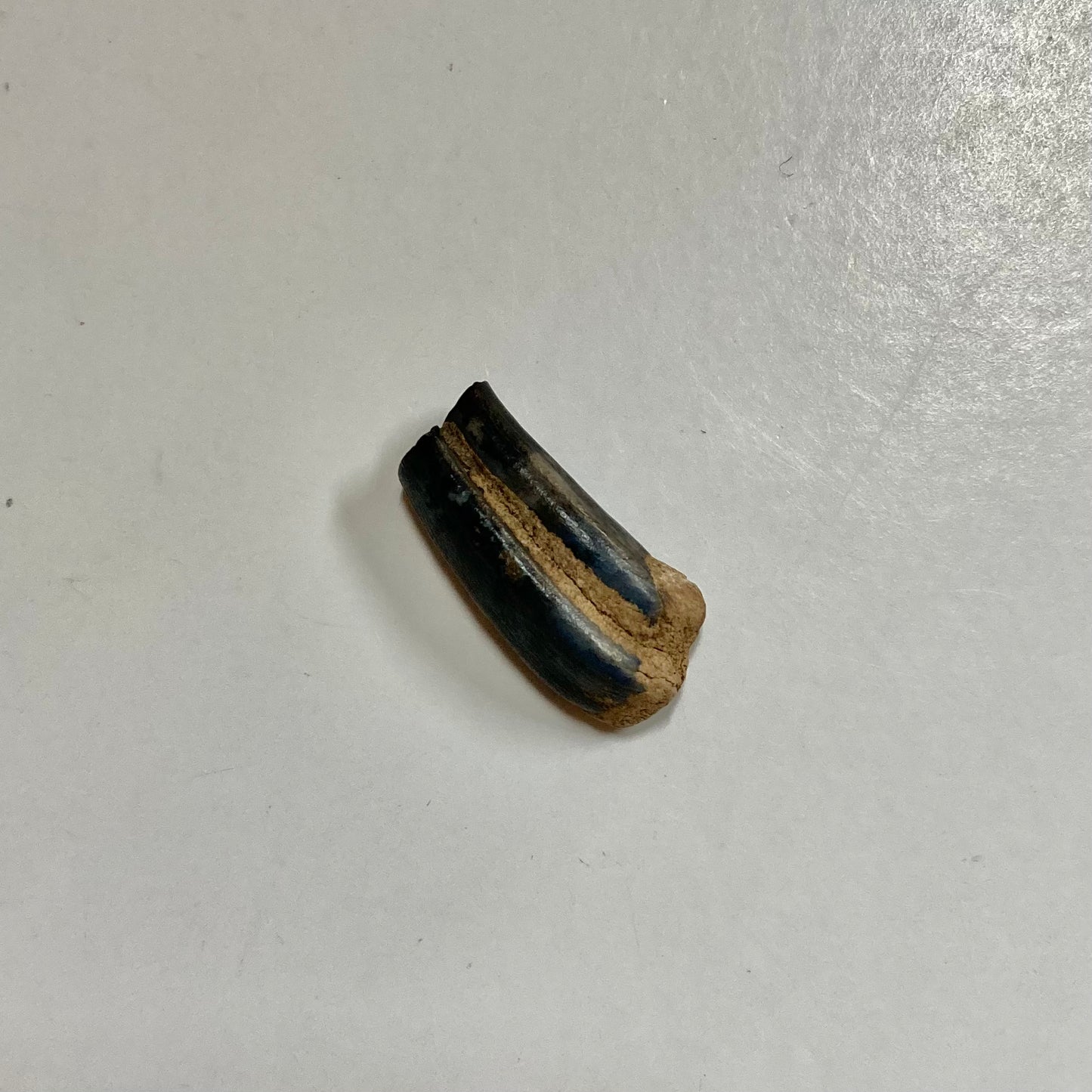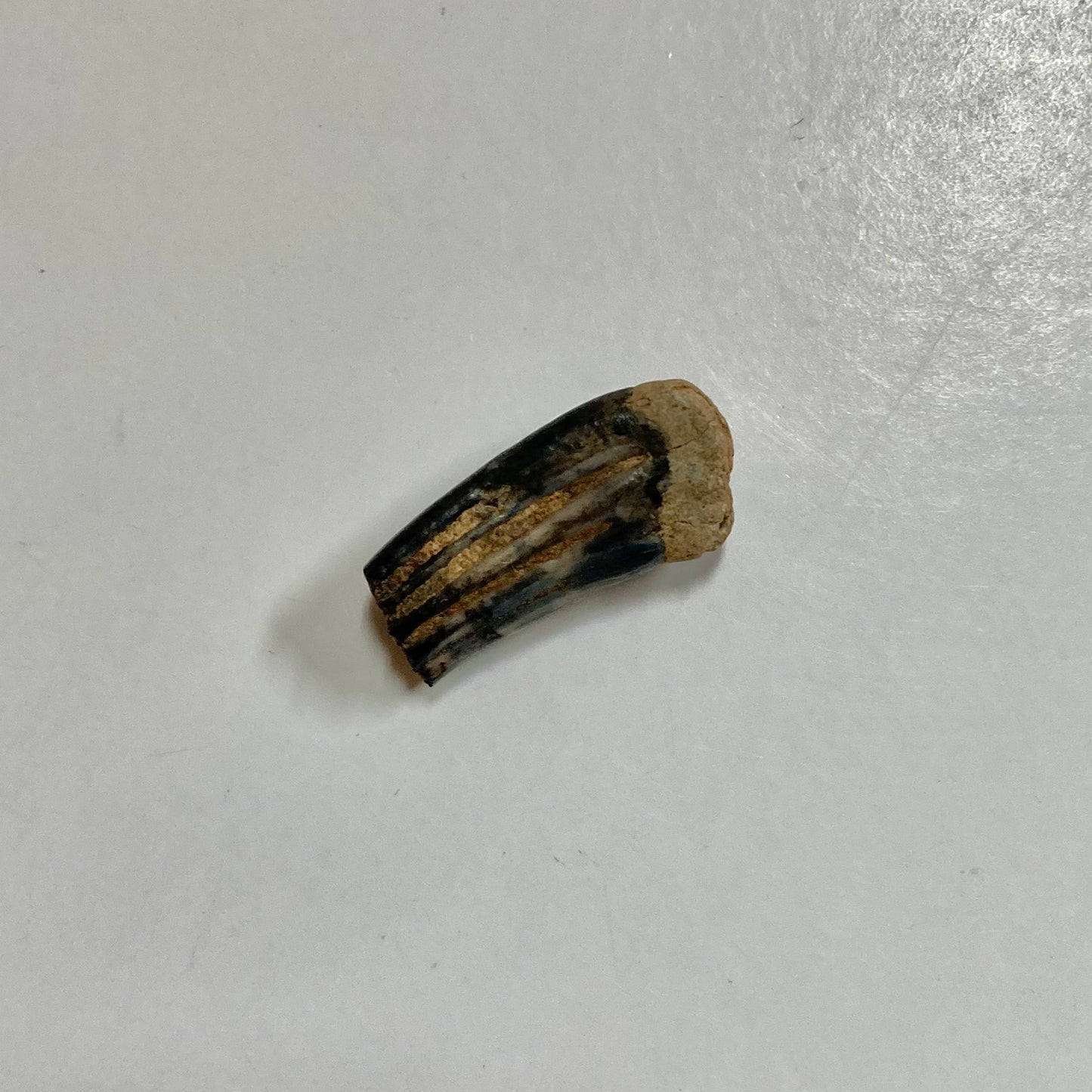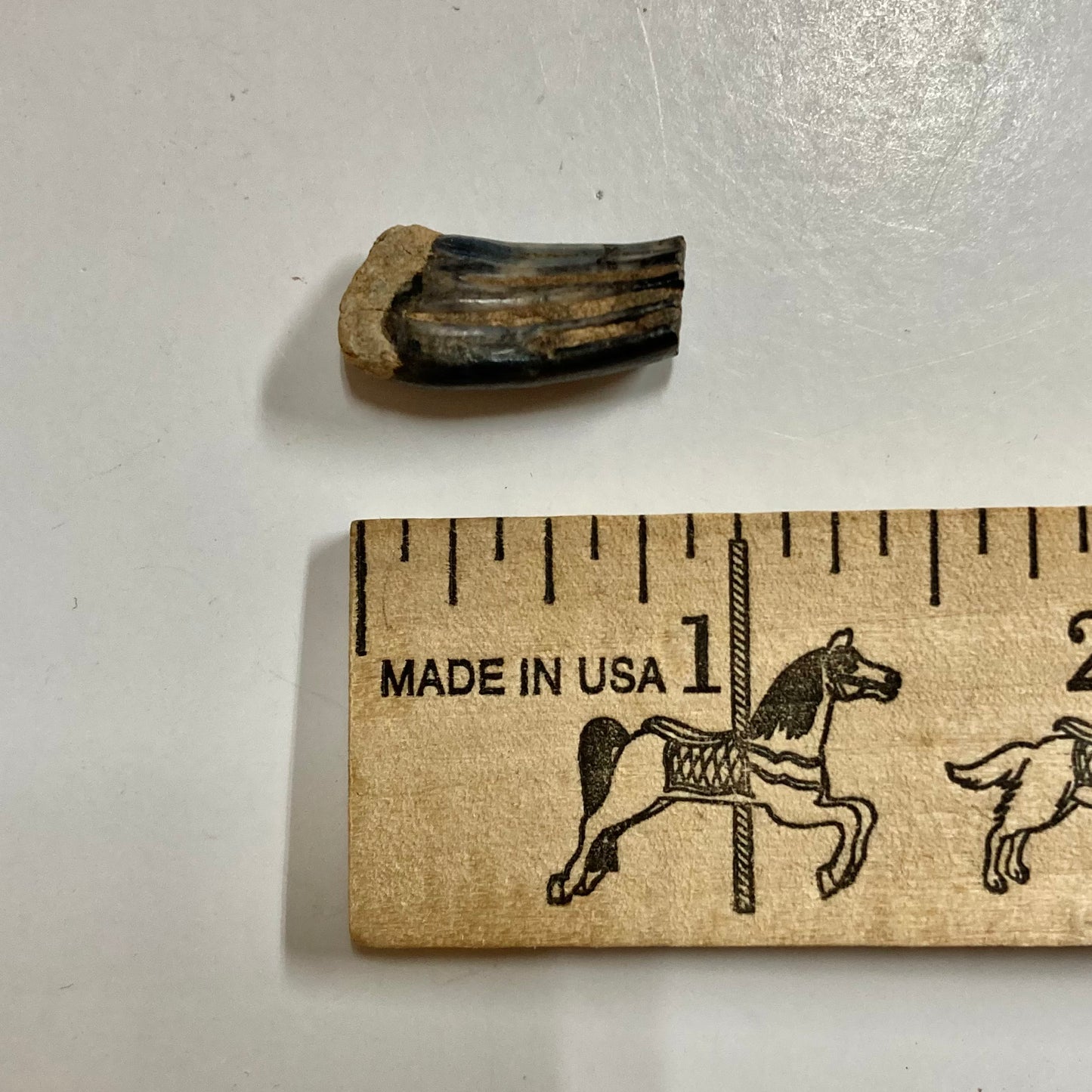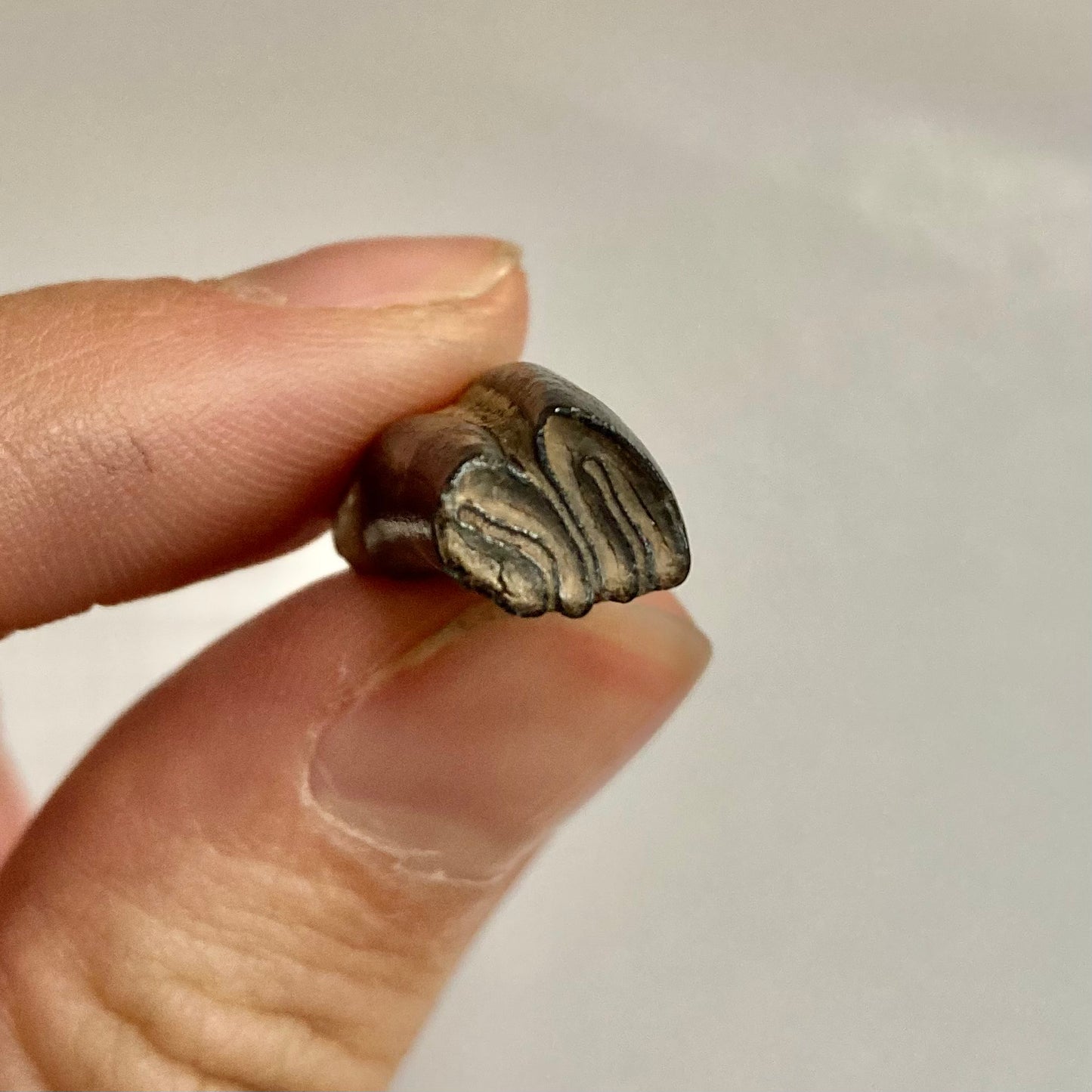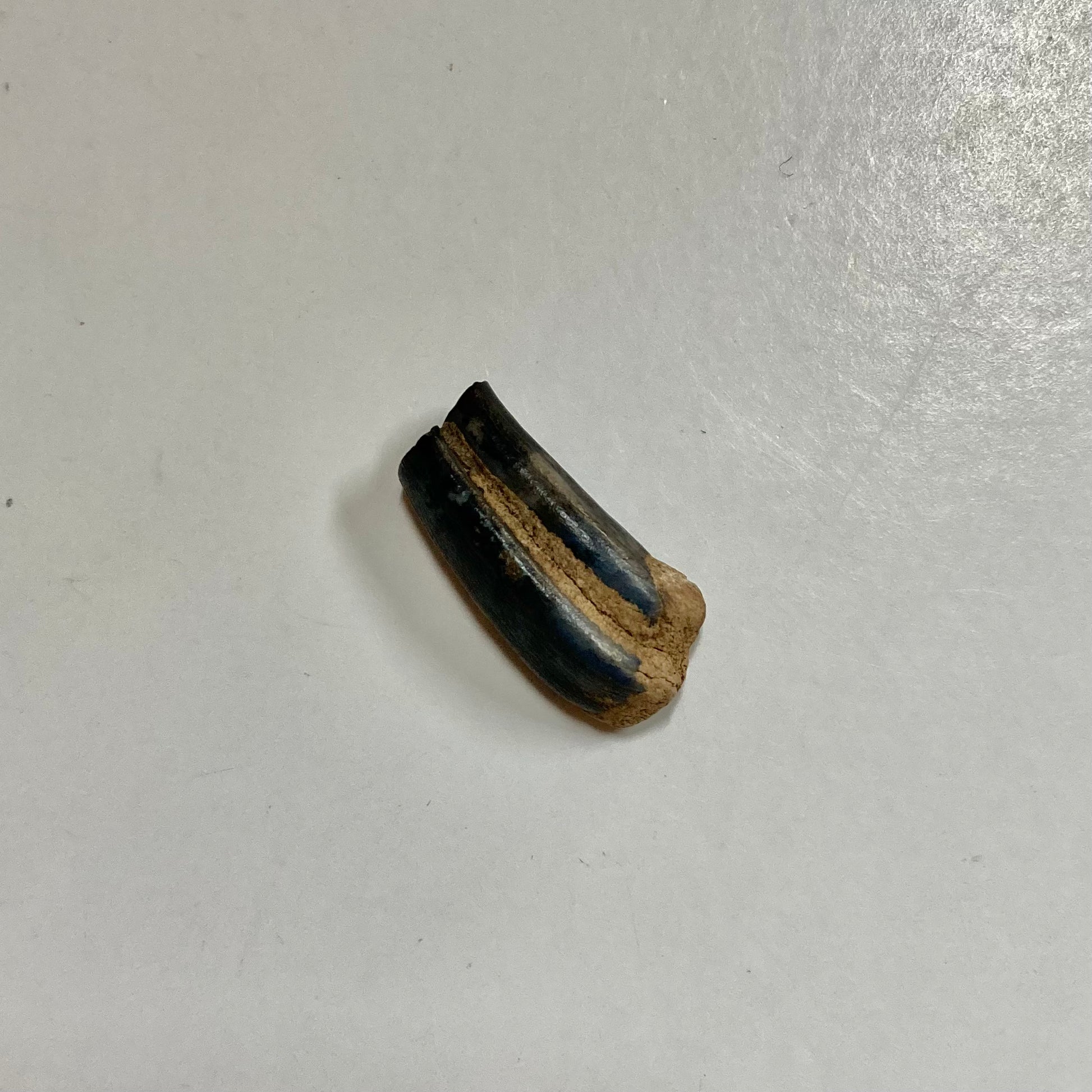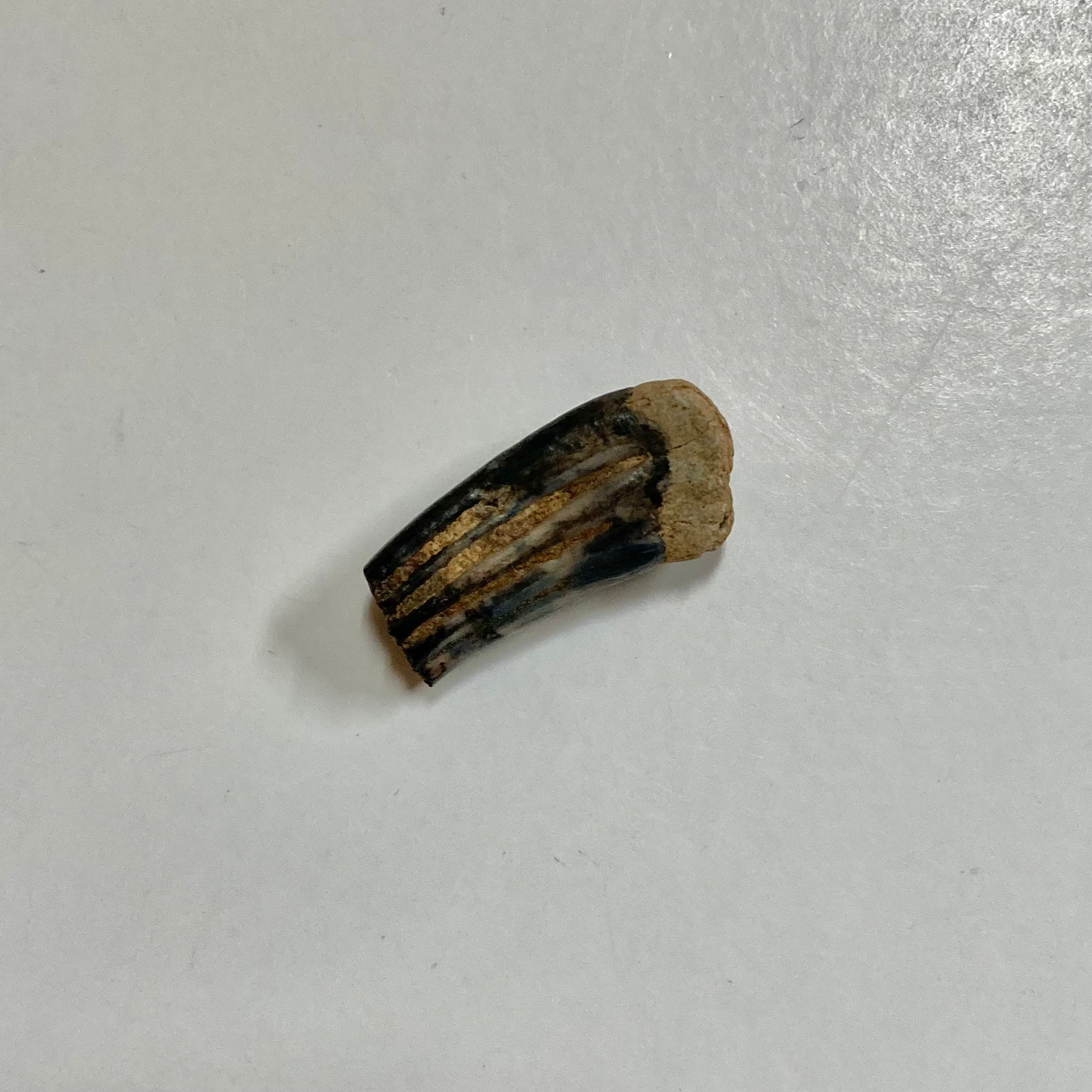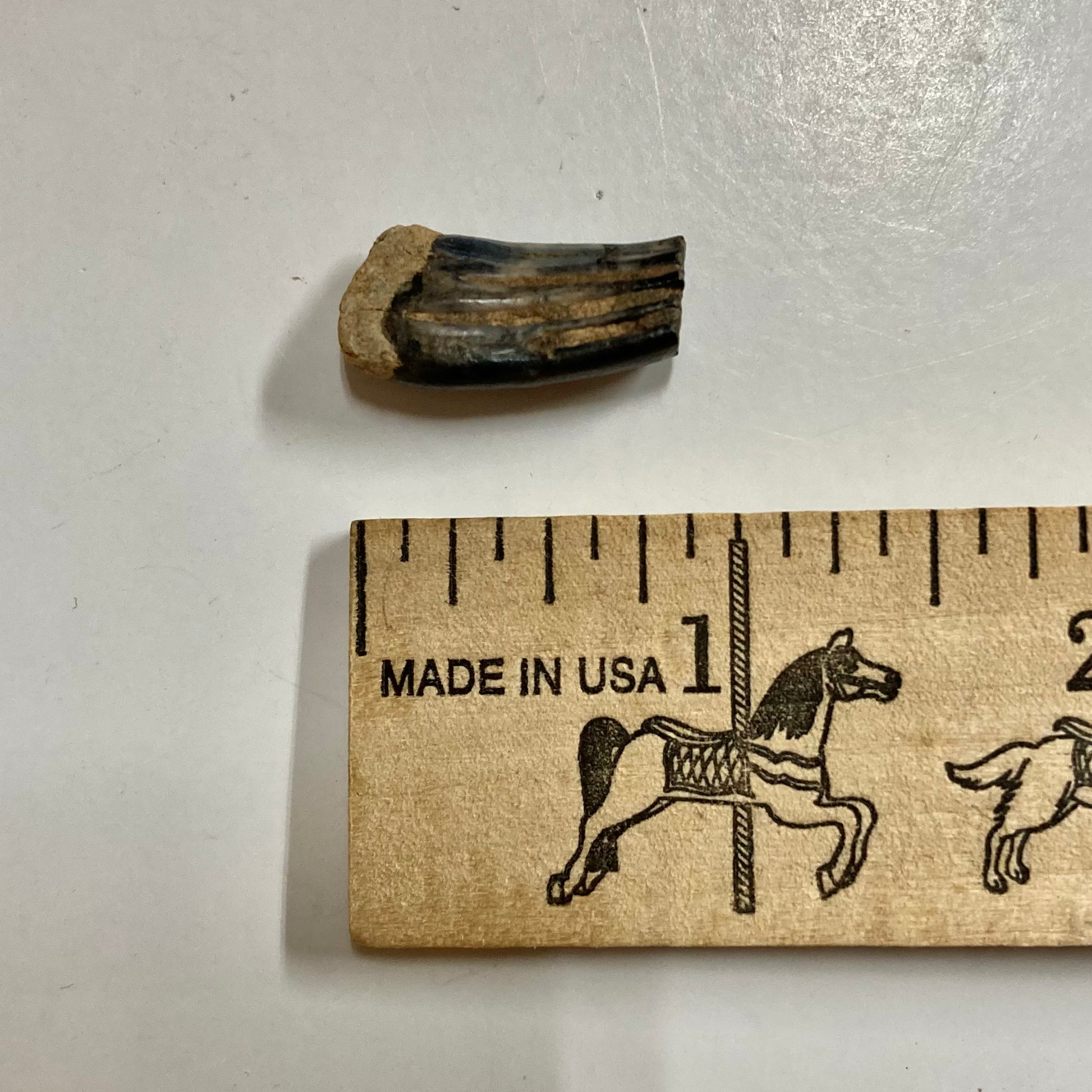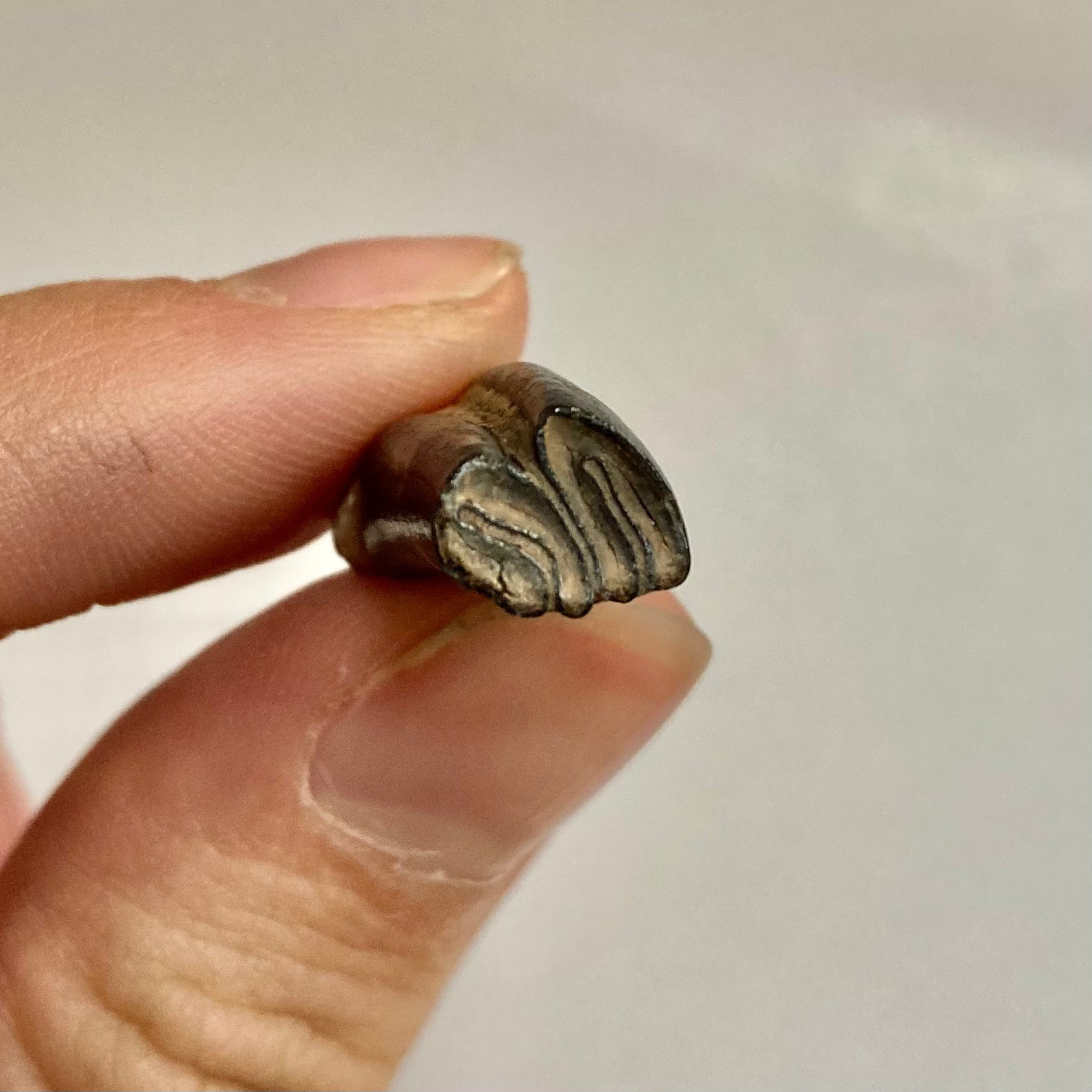Past & Present Science and Nature Store
Beaver Molar
Beaver Molar
Couldn't load pickup availability
This 15,000-year old tooth comes from the largest North American rodent, the modern American beaver.
Beavers have been around for 12 million years with the oldest known fossils in North America to be about 7 million years old. It is believed these mammals migrated across the Bering Strait from Eurasia to North America millions of years ago. The largest beaver and rodent to ever exist was the Giant Beaver that lived over 10,000 years ago, standing at 3 feet tall and 7 feet long. There is also fossil evidence of the Giant Beaver and the American Beaver living together during the last part of the Ice Age.
Beavers are semiaquatic animals with leathery, insulated skin covered by thick, waterproof, buoyant fur. The broad, flat tail is made of fat which can be used for energy during food shortage, and also provides a "cushion" for the beaver to sit on. Their back feet are webbed to help with swimming while the front are dexterous so they can grab objects, groom themselves, and dig.
Like all other rodents, the front incisor teeth continually grow throughout the animal's life. These teeth can grow up the 6 inches a year. They are kept shortened with constant use. Molars have many ridges that grind tough, fibrous food. The sharp ridges of enamel have layers of softer dentine that wear down faster than the ridges that stay sharp peaks for a longer time. Once those sharp peaks start to wear down, the teeth do not do as good of a job grinding food, thus signaling the animal is getting to the end of its life.
There are two extant species of beavers: Castor canadensis (North American beaver) and Castor fiber (Eurasian beaver). Beavers have virtually not changed over millions of years.
Type: Beaver Molar
Species: Castor canadensis
Age: Pleistocene (15,000 years ago)
Locality: Florida
Weight: .05 oz.
Share
